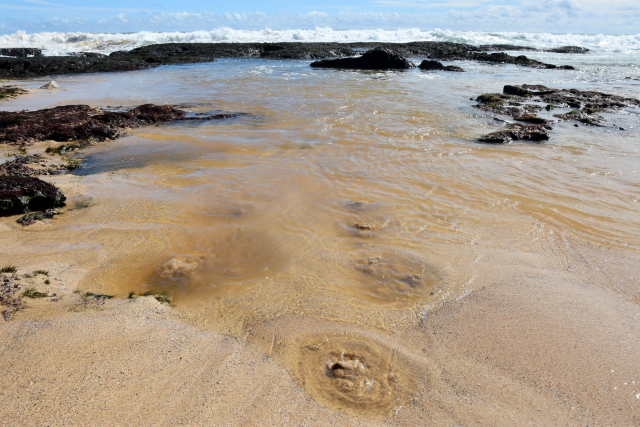12/03/2020 | Groundwater is the largest reservoir of fresh water, one of the most valuable natural resources in the world. It is vital for crops and as drinking water for humans. It is found directly under our feet in the cracks and pores of the soil, sediments and rocks.
Under the leadership of the University of Göttingen, a group of researchers, including geologist Nils Moosdorf from the Leibniz Center for Marine Tropical Research (ZMT), has developed the first computer model that can be used to track the flow of groundwater into the world's oceans globally. The results of the study were recently published in the journal Nature Communications.
The scientists' analysis shows that 20 percent of coastal ecosystems worldwide, some of which are very sensitive, such as salt marshes, coral reefs and river estuaries, are threatened by pollutants that are transported from land to sea by the groundwater flow. This is particularly the case in tropical regions.
The researchers determined the groundwater flow in coastal regions worldwide by combining a newly developed computer model with a global data analysis of the topography, groundwater recharge and characteristics of the rock layers below the surface. They show that the overall flow of groundwater into coastal seas is small on a global scale compared to that of rivers. It is about 80 km³ per year.
Based on the calculated quantities, the researchers question earlier claims that the freshwater flow significantly affects the carbon, iron and silicate balance of the oceans as a whole. However, the effects of groundwater along coasts can be of great local importance.
The water flow is highly variable in different parts of the coastline and can be locally high enough to act as an important source of fresh water, which is indispensable in many places around the world. There are also observations, for example off Tahiti and Mauritius, that the mixing of seawater with fresh groundwater supports the local marine fauna - presumably by introducing nutrients such as nitrogen or phosphate.
However, there are also negative effects of groundwater flows on coastal ecosystems. These include, in particular, an excess of nutrients such as nitrogen and pollutants that seep into the ground and then into the groundwater. This poses a threat to sensitive coastal ecosystems such as coral reefs - about 15% of the world's coral reefs are affected. The consequences are not always immediate. It can take years or even decades for the polluted freshwater to drain into the sea.
"What is particularly exciting is that submarine groundwater discharge, which receives little attention in Germany, is much more relevant in other regions of the world," explains Nils Moosdorf. "For example, more than half of the global submarine groundwater discharge from coastal areas lies directly around the equator."
Publication
Luijendijk, E., T. Gleeson, and N. Moosdorf (2020), Fresh groundwater discharge insignificant for the world’s oceans but important for coastal ecosystems, Nat Commun, 11(1), 1260, doi:10.1038/s41467-020-15064-8.





